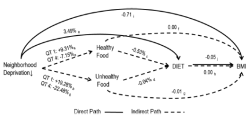Mapping discussions about forests and forest management
 Wednesday, June 24, 2015 at 1:38PM
Wednesday, June 24, 2015 at 1:38PM Lei, S. and M. Kelly. 2015. Evaluating adaptive collaborative management in Sierra Nevada forests by exploring public meeting dialogues using Self-Organizing Maps. Society and Natural Resources (28)8: 873-890
 Heat map of discussion in SNAMP meetings: red conveys most consistently discussed topics; blue conveys least consistently discussedCollaborative adaptive management (CAM) is an appropriate management regime for social-ecological systems because it aims to reduce management uncertainties and fosters collaboration among diverse stakeholders. We evaluate the effectiveness of CAM in fostering collaboration among contentious multiparty environmental stakeholders based the Sierra Nevada Adaptive Management Project (SNAMP). Our evaluation focuses on facilitated public multiparty discussions (2005-2012). Self-organizing maps (SOM), an unsupervised machine-learning method, were used to process, organize, and visualize the public meeting notes.
Heat map of discussion in SNAMP meetings: red conveys most consistently discussed topics; blue conveys least consistently discussedCollaborative adaptive management (CAM) is an appropriate management regime for social-ecological systems because it aims to reduce management uncertainties and fosters collaboration among diverse stakeholders. We evaluate the effectiveness of CAM in fostering collaboration among contentious multiparty environmental stakeholders based the Sierra Nevada Adaptive Management Project (SNAMP). Our evaluation focuses on facilitated public multiparty discussions (2005-2012). Self-organizing maps (SOM), an unsupervised machine-learning method, were used to process, organize, and visualize the public meeting notes.
 forests,
forests,  participatory,
participatory,  snamp
snamp 





